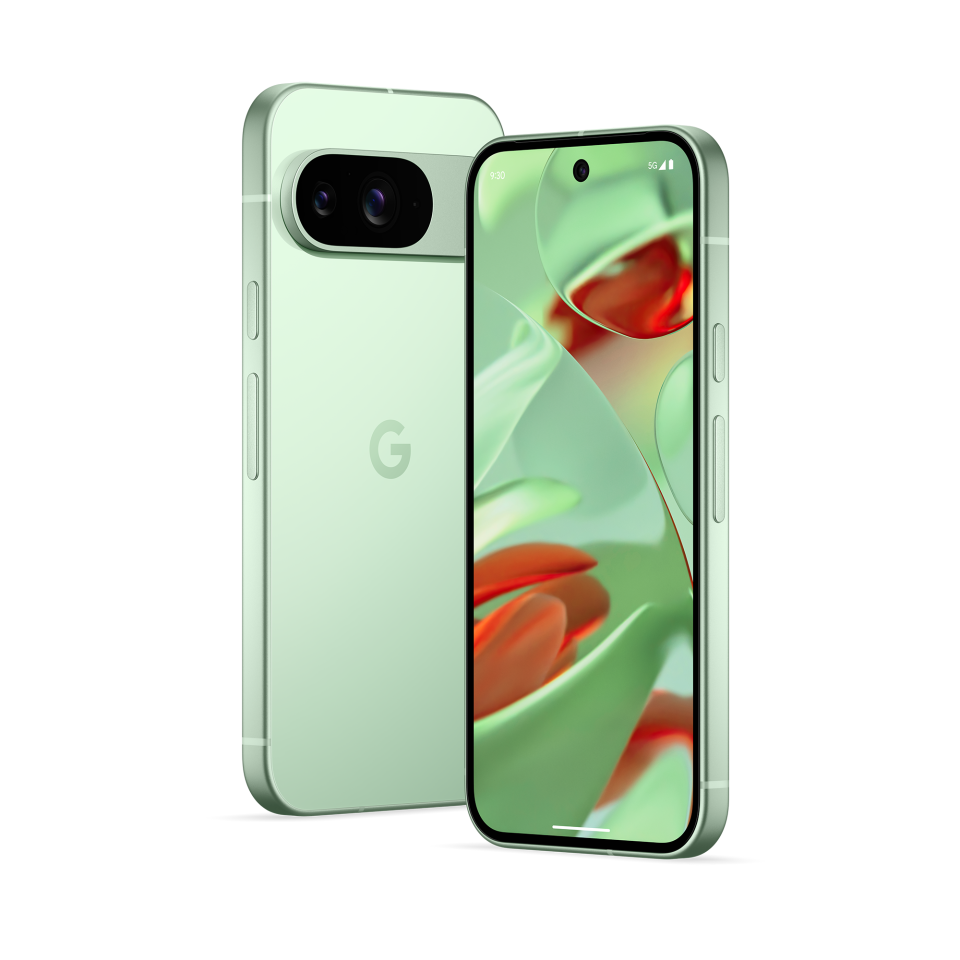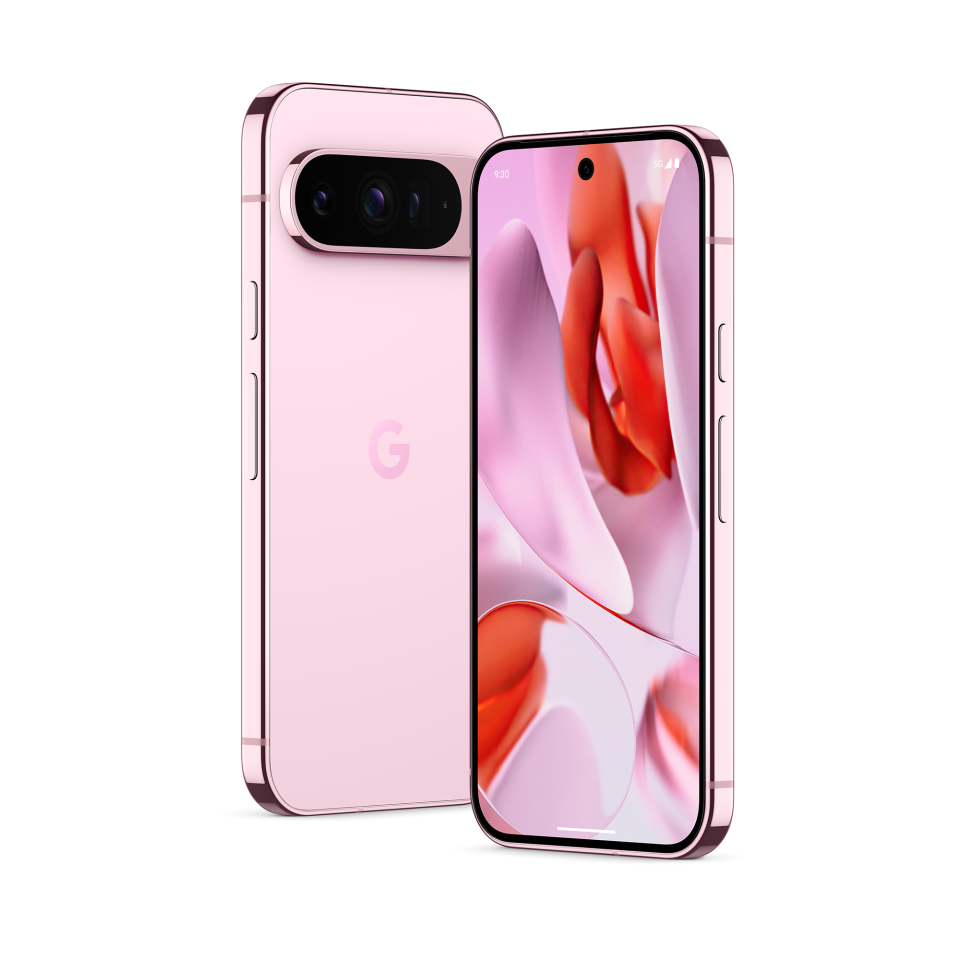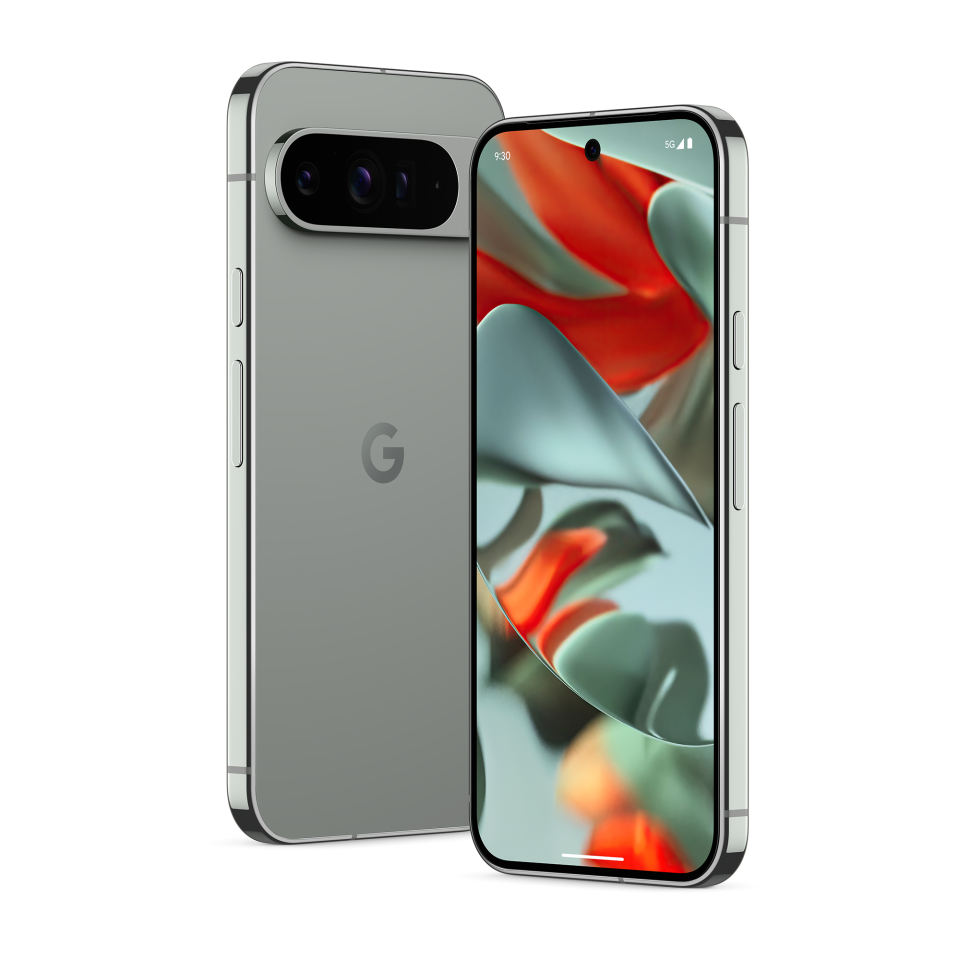Google Pixel 9: News, release date, price, specs, and features

After months of leaks, rumors, and official teases right from the source, Google's new Pixel 9 series is officially here. This year represents the biggest shake up to the company's smartphone lineup since Tensor, introducing an entirely new model alongside fresh upgrades over last year's Pixel 8 and Pixel 8 Pro. If you're curious whether this lineup is worthy of your hard-earned cash, here's everything you need to know about the Pixel 9, Pixel 9 Pro, and Pixel 9 XL.
Google Pixel 9 series: Price and Release Date
Want the small Pro? You'll be waiting a while longer

Source: Google
If you already know you're ready to preorder a Pixel 9 or Pixel 9 Pro, here's what you need to know. After Google officially debuted the phones on stage in Mountain View on August 13th, its latest lineup went up for preorder. The Pixel 9, which starts at $800 for the base 128GB model, will hit store shelves on August 22nd, alongside the supersized Pixel 9 Pro XL. That phone is also getting a price hike compared to its predecessor, with the 128GB model starting at $1,100.
As for the Pixel 9 Pro, you'll have to wait until September 4th, when it launches alongside the Pixel 9 Pro Fold. If, like many of us, this is the phone you've been waiting for since the days of the Pixel 5, you'll need to be just a little more patient. When it does go on sale, you'll be able to grab it starting at $1,000.
- A render of the Google Pixel 9 in Wintergreen against a white background.
Google Pixel 9
- Render of the Google Pixel 9 Pro in pink against a white background.
Google Pixel 9 Pro
- Render of the Google Pixel 9 Pro XL in hazel against a white background.
Google Pixel 9 Pro XL
This year, the Pixel 9 trio will be available in Australia, Austria, Belgium, Canada, Czechia, Denmark, Estonia, Finland, France, Germany, Hungary, India, Ireland, Italy, Japan, Latvia, Lithuania, Malaysia, Netherlands, Norway, Poland, Portugal, Romania, Singapore, Slovakia, Slovenia, Spain, Sweden, Switzerland, Taiwan, the UK, and the US.
Google Pixel 9 series: Design, Display, and Performance
Big changes, inside and out

Source: Google
Alright, let's not leave you waiting. In order to talk about the Pixel 9's design, we need to establish what the Pixel 9 even is. Unlike years in the past, we're looking at three unique smartphones this year, which could make the decision on which to buy more complicated than ever. On the other hand, small smartphone lovers rejoice — you're finally getting a telephoto lens on a Pixel device that might actually slot into your pocket.
This year's lineup consists of the Pixel 9, a direct successor to last year's excellent Pixel 8. In addition, Google has split its Pro-branded phone into two models: the Pixel 9 Pro, and the Pixel 9 Pro XL. The latter is a sequel to last year's Pixel 8 Pro, featuring a 6.8-inch display, the largest on a Pixel phone to date. The Pixel 9 Pro, meanwhile, uses the same 6.3-inch screen size as the standard Pixel 9, but with virtually identical specs to the larger XL model. And yes, that includes a telephoto camera, a first on a Tensor-powered Pixel this small.

There is, technically, a fourth entry in the Pixel 9 lineup this year: the Pixel 9 Pro Fold. As a successor to the original Pixel Fold, it's really a device in a class of its own. If you're looking to learn more about the Pixel 9 Pro Fold, check out our dedicated guide below.
The standard Pixel 9, despite lacking that high-end branding, is a pretty impressive piece of hardware in and of itself. It has the same new design as the entire Pixel 9 family, swapping to a flat-edged frame that looks great in person. This model is still using glossy glass for its back panel, though its frame does use a matte aluminum finish that avoids smudging. It comes in Obsidian, Porcelain, Wintergreen, and Peony, and while those last two colors might sound similar to the 9 Pro on paper, they're much more saturated than their more expensive counterparts.

The Pixel 9 uses a 6.3-inch 1080p 120Hz display rocking Google's in-house Actua branding. It's a brighter panel than last year, moving up to 1,800 nits of brightness while displaying HDR content and a whopping 2,700 nits in high brightness mode. Both of those figures are actually more impressive than last year's Pixel 8 Pro — not too shabby.
The Pixel 9 Pro and Pro XL share a design and the majority of their specs, but with two display sizes. The Pixel 9 Pro includes a 6.3-inch screen, while the Pixel 9 Pro XL boosts that size up to 6.8 inches. Both panels are QHD LTPO OLED screens using Google's Super Actua displays, capable of moving between 1Hz and 120Hz to help preserve battery life. Likewise, each panel supports up to 2,000 nits of brightness in HDR mode and up to 3,000 nits of peak brightness. Needless to say, they're great screens.
This year's Pro design effectively matches that of the cheaper Pixel 9, but with a more premium look and feel. Google swaps the glossy finish for matte glass similar to that of last year's Pixel 8 Pro, while the flat frame gets a metallic finish that looks absolutely stunning in person — and feels practically guaranteed to pick up smudges within minutes of an unboxing. Both sizes come in Obsidian, Porcelain, Hazel, and Rose Quartz.

Source: Google
Under the hood, all three models are using Google's new Tensor G4 processor. Practically every rumor leading up to launch suggested this chipset is a slightly modified variant over last year's Tensor G3, though we'll actually have to use the phones for ourselves to find out how different it feels in person, especially when it comes to efficiency. Tensor-powered Pixels have always fallen short in the battery compartment compared to their Qualcomm-powered rivals; it's unclear if this is the generation to fix things.
Google Pixel 9 specs
To help with Google's focus on AI skills, the entire Pixel 9 series has received a RAM boost, bringing the Pixel 9 up to 12GB and both Pro models up to a whopping 16GB. Fingers crossed that avoids any awkward missing on-device features, as we saw throughout the last year with the Pixel 8.
Google Pixel 9 Pro specs
There are a handful of other hardware changes, including a move to an ultrasonic fingerprint sensor that should put to bed any complaints surrounding slow unlock times on Pixel. Google has also built all three phones with support for satellite connectivity, in case you wander outside of a reliable cellular connection. And, for the first time ever, the Pixel 9 Pro XL now supports up to 45W of charging, capable of hitting 70 percent in about 30 minutes using the company's official charging brick. Unfortunately, there's no MagSafe-esque Qi 2 support here this time around.
Google Pixel 9 Pro XL specs
Google Pixel 9 series: Cameras
Same as it ever was, for the most part

Source: Google
Google is sticking to a 50MP main sensor on the Pixel 9 this year, though the ultra-wide lens is getting a big boost up to 48MP. The Pixel 9 Pro and Pro XL, meanwhile, use identical main and ultra-wide lenses, while also including a 5x 48MP telephoto lens that sounds, at least, on paper, identical to the Pixel 8 Pro's zoom lens from last year. As ever, these Pro phones can also utilize Super Res Zoom to hit subjects at 30x. And, as a bonus, Zoom Enhance — originally announced as a Pixel 8 Pro feature — is finally shipping with the Pixel 9 Pro.
As for the front-facing camera, the Pixel 9 is sticking with a 10.5MP sensor, while the Pixel 9 Pro and Pro XL move to a 42MP sensor with a wider field of view. All three support face unlock, which should pair well with that new fingerprint sensor.
As is usual for Google, nearly all of the changes for the camera are happening within software, with improvements to post-processing, HDR+, and — even more importantly — new AI-powered tools to change how you capture images. In fact, AI is the big theme this year, which brings us to our next focus.
Google Pixel 9 series: Software and OS Updates
As usual, AI is Google's MO

Source: Google
In a first for Pixel, Google is shipping its latest phones with last year's Android upgrade. These devices are arriving with Android 14 out of the box, with a planned update to Android 15 coming sometime in the next month or two. All three models are supported for seven years of OS upgrades, though it's unclear if this awkward launch could end up meaning the Pixel 9 trio misses a final upgrade to whatever version will ship in the fall of 2031. The only way to know the real result of that, of course, is to jump seven years into the future.
Without a new build of Android, the real story this year is, unsurprisingly, AI. Google is pushing Gemini harder than ever, even referring to Assistant as a "legacy" product with the press. Like other smartphones we've seen launch over the past couple of months, Gemini is the AI assistant that appears during setup, and with that platform comes all sorts of Pixel-exclusive tools that might actually convince some buyers to upgrade.

On the more impressive side of things, we have tools like Pixel Screenshots, which deposits all of your screen captures in one easy-to-use, well-designed space. Using AI, Google is able to pull specific details out from whatever you've captured, which allows for quickly finding information, creating calendar events, reminders, and so much more. Gemini Live is also arriving alongside the Pixel 9 series, which allows users to have a more free-flowing conversation with their virtual assistant — including interruptions. This feature, however, is rolling out to all Gemini Advanced users, so you won't need a Pixel 9 to try it out.

Google is also bringing some of those AI skills to the Pixel 9's camera, starting with Add Me. This tool allows you to take group photos without leaving someone else or relying on a nearby stranger, effectively Photoshopping one person in with just one extra step. After you take the first shot, the original photographer can enter the frame for a second take. Behind the scenes, Google will blend the two images together to create a single memory. The Pixel 9 is also getting a new-and-improved Panorama Mode that is much better at tracking across a single sky, all while improving low-light captures.
Not everything is quite as impressive as these, though. Pixel Studio, for example, is the company's latest AI image generator, and it's… fine. It's capable of generating through keywords, and every image you do create is customizable and editable. Largely speaking, though, these still look like AI images, and it's unclear if the general public is actually demanding something like that. Similarly, Reimagine allows you to shake up captured images with colored clouds or virtual graffiti, but some of our early demos looked unconvincing.
Google's latest Pixel trio could be the best phones of 2024
There's only one way to know for sure

Source: Google
While plenty of Pixel die-hards and Android super-users are looking forward to next year's Pixel 10 and its rumored Tensor overhaul, the Pixel 9 trio seems pretty impressive on paper. With an all-new design, brighter displays, and more AI smarts than you know what to do with, it's clear Google is betting on these three phones to carry its current Gemini-driven agenda into the future. We'll have plenty more on all three phones in the near future — including, of course, full reviews — so stay tuned. We're just getting started.
- A render of the Google Pixel 9 in Wintergreen against a white background.
Google Pixel 9
The Pixel 9 is Google's most affordable 2024 flagship, making a few compromises when compared to the Pixel 9 Pro and Pro XL while retaining the Google smarts the lineup has become known for. An upgraded 48MP ultra-wide camera is paired with a 50MP main shooter, and the selfie cam added autofocus. All of this comes with new Gemini AI features and a 2,700-nit Actua display for exceptional value at its price point.
- Render of the Google Pixel 9 Pro in pink against a white background.
Google Pixel 9 Pro
The Pixel 9 Pro is a new addition to Google's lineup, slotting in as a smaller premium flagship to pair with the Pixel 9 Pro XL. The latter is the direct successor to 2023's Pixel 8 Pro despite its new XL moniker, whereas the Pixel 9 Pro brings a new form-factor to Google's high-end offerings, sporting the same dimensions as the standard Pixel 9 model while packing all the AI and camera prowess we've grown accustomed to from Google's Pro lineup.
- Render of the Google Pixel 9 Pro XL in hazel against a white background.
Google Pixel 9 Pro XL
The Pixel 9 Pro XL has a new name, but it fills the same slot as 2023's Pixel 8 Pro, having similar specs with roughly the same footprint. The non-XL Pixel 9 Pro is new to the lineup as a smaller premium flagship offering. With the 9 Pro XL, however, you get Google's fastest charging, a bigger screen and battery, and all of the camera and Gemini AI smarts you'd get in the smaller 9 Pro.
Solve the daily Crossword




